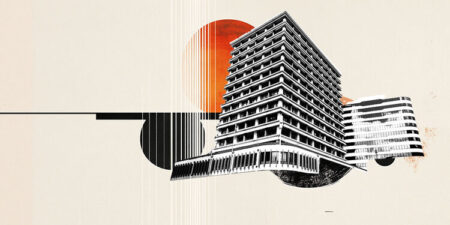While many Americans rely on Individual Retirement Accounts (IRAs) to prepare for retirement while enjoying tax benefits, malicious actors are exploiting the complexity of these products to trap savers.
In particular, Self-Directed IRAs have become a prime target for fraudsters looking for vulnerable investors.
Against a backdrop of growing concerns about retirement planning, it is essential to inform and educate investors about the dubious practices that threaten their financial security.
Here’s how to spot the warning signs of fraud and avoid abusive charges that could jeopardize your future or your Social Security.
Self-Directed IRAs: Freedom or trap?
An Individual Retirement Account (IRA) makes it possible to build up retirement savings while taking advantage of tax deductions or tax-sheltered investment growth.
Among the various types of IRAs, the Self-Directed IRA stands out for the freedom it offers investors: Real Estate, Crypto-assets, Precious Metals, private investments… almost everything becomes accessible.
But this increased freedom comes with a major risk, that of acting without a safety net. Unlike Traditional IRAs, the custodians of Self-Directed IRAs are not obliged to check the legitimacy of investments or the competence of promoters. In other words, if you get ripped off, you do so at your own risk.
Excessive fees: The silent weapon of fraudsters
In addition to direct fraud, one of the most common pitfalls is excessive IRA fees. Some players exploit the complexity of self-managed IRAs to charge :
- Exaggerated account opening fees
- High transaction fees
- Overpriced storage fees (particularly for precious metals)
- Opaque and escalating annual fees
- Premiums on assets well in excess of their real value
Investors can see their returns slashed by dozens of percent before they even see a return. What’s worse? These charges are sometimes hidden in incomprehensible or deliberately ambiguous documents.
When fraud hides behind seductive rhetoric
IRA scams often take a subtle form. There are a few warning signs that you should be aware of:
- Promises of guaranteed returns: No investment is risk-free. Terms such as “risk-free”, “100% secure” or “guaranteed return” are the hallmarks of a scam.
- Aggressive sales tactics: Scaremongering, a false sense of urgency, pressure to transfer your funds quickly.
- Unsolicited offers: Beware of out-of-the-blue calls or emails urging you to invest in precious metals or transfer your assets to a new account.
- Illegal home storage: Some scammers claim it’s possible to store gold in your IRA in your home, which violates IRS rules and can nullify the tax benefits of your account.
How can you protect yourself from IRA scams?
Here are a few practical tips to protect your pension and avoid falling into the trap:
- Always check fees: Demand full transparency on management, purchase, sale and storage costs.
- Look for the custodian: Make sure the custodian of your IRA is IRS-approved and independent of the seller or promoter.
- Avoid offers that are too good to be true: If you are promised high gains with zero risk, run away.
- Seek advice from a licensed professional: A financial adviser or specialist lawyer can help you validate an investment.
- Read the small print: Never sign a document you don’t fully understand.
Retirement planning: Too important to leave to chance
At a time when public pensions such as Social Security are struggling to cover the retirement needs of a majority of Americans, individual savings are becoming central to retirement planning.
IRAs, used properly, can be a powerful tool. But without vigilance, they can also turn into a financial nightmare.
Stay informed, ask questions, check every piece of information, and above all, never let a sense of urgency guide your decisions. When it comes to investing for retirement, prudence is your best ally.
IRAs FAQs
An IRA (Individual Retirement Account) allows you to make tax-deferred investments to save money and provide financial security when you retire. There are different types of IRAs, the most common being a traditional one – in which contributions may be tax-deductible – and a Roth IRA, a personal savings plan where contributions are not tax deductible but earnings and withdrawals may be tax-free. When you add money to your IRA, this can be invested in a wide range of financial products, usually a portfolio based on bonds, stocks and mutual funds.
Yes. For conventional IRAs, one can get exposure to Gold by investing in Gold-focused securities, such as ETFs. In the case of a self-directed IRA (SDIRA), which offers the possibility of investing in alternative assets, Gold and precious metals are available. In such cases, the investment is based on holding physical Gold (or any other precious metals like Silver, Platinum or Palladium). When investing in a Gold IRA, you don’t keep the physical metal, but a custodian entity does.
They are different products, both designed to help individuals save for retirement. The 401(k) is sponsored by employers and is built by deducting contributions directly from the paycheck, which are usually matched by the employer. Decisions on investment are very limited. An IRA, meanwhile, is a plan that an individual opens with a financial institution and offers more investment options. Both systems are quite similar in terms of taxation as contributions are either made pre-tax or are tax-deductible. You don’t have to choose one or the other: even if you have a 401(k) plan, you may be able to put extra money aside in an IRA
The US Internal Revenue Service (IRS) doesn’t specifically give any requirements regarding minimum contributions to start and deposit in an IRA (it does, however, for conversions and withdrawals). Still, some brokers may require a minimum amount depending on the funds you would like to invest in. On the other hand, the IRS establishes a maximum amount that an individual can contribute to their IRA each year.
Investment volatility is an inherent risk to any portfolio, including an IRA. The more traditional IRAs – based on a portfolio made of stocks, bonds, or mutual funds – is subject to market fluctuations and can lead to potential losses over time. Having said that, IRAs are long-term investments (even over decades), and markets tend to rise beyond short-term corrections. Still, every investor should consider their risk tolerance and choose a portfolio that suits it. Stocks tend to be more volatile than bonds, and assets available in certain self-directed IRAs, such as precious metals or cryptocurrencies, can face extremely high volatility. Diversifying your IRA investments across asset classes, sectors and geographic regions is one way to protect it against market fluctuations that could threaten its health.
Read the full article here
















